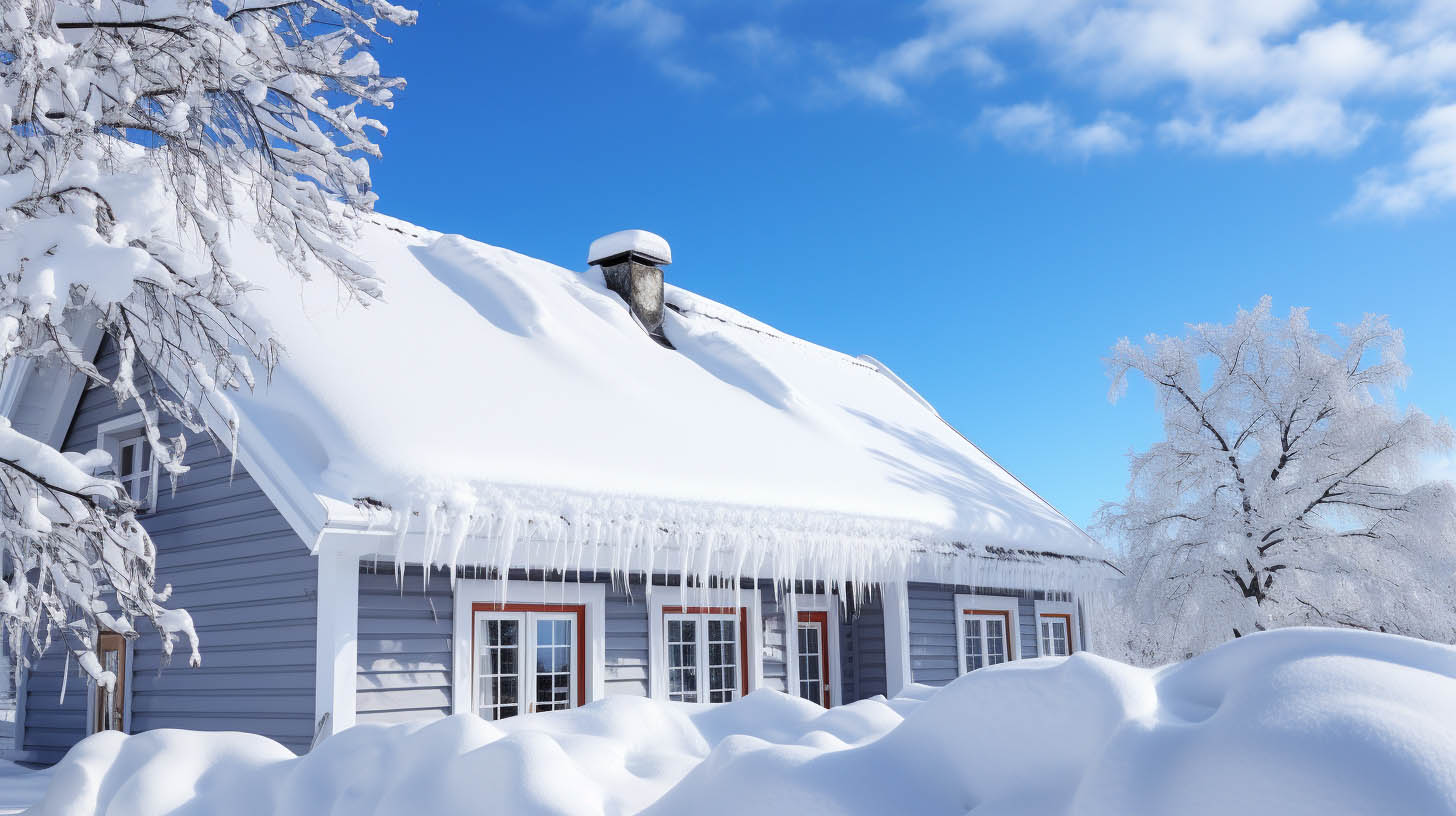
Understanding Snow Weight and Its Impact on Roofs
The Science of Snow: Composition and Weight Variations
Snow, a winter phenomenon, varies significantly in weight based on its composition. The type of snowfall – whether fluffy or heavy-packed – is influenced by atmospheric conditions such as temperature and humidity. Light, fluffy snow, often seen in colder temperatures, weighs approximately 4 pounds per square foot. In contrast, wet, heavy snow, typical in near-freezing conditions with high humidity, can weigh close to 13 pounds per square foot. This distinction is crucial for understanding the stress exerted on roofs during winter.
Roof Design and Snow Accumulation
The architecture of a roof plays a pivotal role in snow accumulation and its subsequent impact. The pitch of the roof, measured as the rise over a 12-inch run, significantly affects snow retention. Steeper roofs tend to shed snow more efficiently, reducing the load. Conversely, flat roofs are more prone to snow accumulation, necessitating careful monitoring and maintenance.
Roof Load Capacity and Snow Stress
A standard roof is designed to support approximately 20 pounds per square foot. However, the actual snow load that can lead to structural stress varies. For instance, 4 feet of fresh snow or 2 feet of old, compacted snow can start to challenge the integrity of a roof. It’s essential to understand these limits to prevent potential roof collapse, especially in regions with heavy snowfall.
Preventive Measures and Solutions
Ice Dams and Roof Leaks
Ice dams, a common winter roofing issue, occur when melted snow refreezes at the roof’s edge, preventing proper drainage. This can lead to water seepage under shingles, causing leaks. Proper attic ventilation and insulation are key to preventing ice dam formation.
Gutter Heat Cables: Installation and Usage
Gutter heat cables are an effective solution for preventing ice dams. These electric cables, when installed along the roof edge and gutters, help melt snow and ice, ensuring proper drainage. Installation involves measuring the roofline, securing a GFCI electrical source, and carefully routing and clipping the cables in place. It’s advisable to activate these cables an hour or two before snowfall for optimal performance.
Professional Assistance and Roof Maintenance
In regions like Columbus, OH, where winter conditions can be severe, professional assistance for roof maintenance is vital. Companies like MaxForce Roofing and Siding LLC offer expertise in handling snow-related roof issues, ensuring the safety and integrity of your home. Regular inspections and maintenance can preemptively address potential problems, providing peace of mind throughout the winter season.
Conclusion
Understanding the dynamics of snow weight and its impact on roofs is crucial for homeowners, particularly in areas prone to heavy snowfall. By being aware of the factors that contribute to roof stress and implementing preventive measures, homeowners can safeguard their properties against the rigors of winter weather. Professional services, like those offered by MaxForce Roofing and Siding LLC, play a vital role in ensuring that roofs are well-prepared to withstand the challenges posed by snow and ice.

